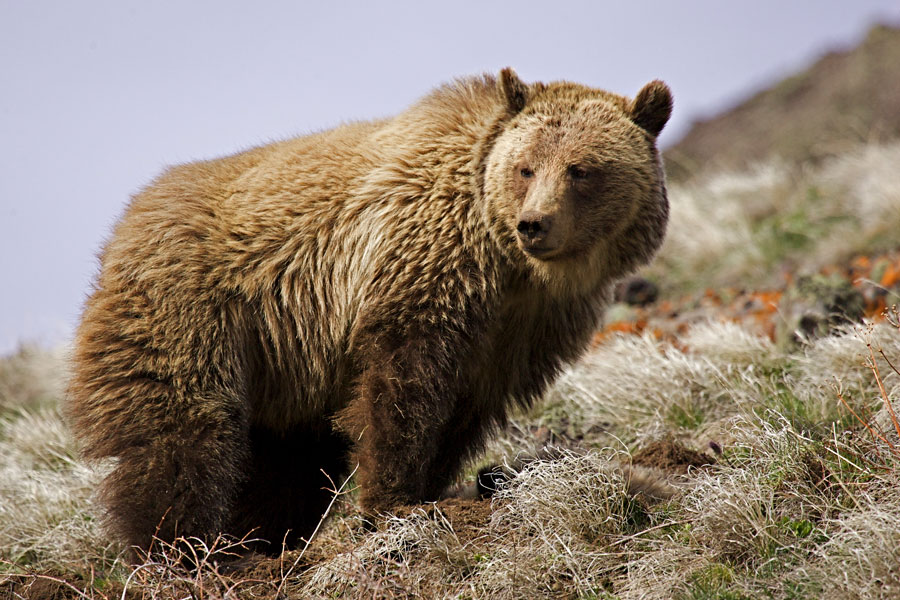Montana is asking the U.S. Fish and Wildlife Service to lift threatened species protections for grizzly bears in the northern portion of the state, including areas in and around Glacier National Park, officials said Monday.
The request, if granted, would open the door to public hunting of grizzlies in Montana for the first time in three decades. It comes after bear populations have expanded, spurring more run-ins including grizzly attacks on livestock and periodic maulings of people.
Removing federal protections would give state wildlife officials more flexibility to deal with bears that get into conflicts, Montana Gov. Greg Gianforte said. But wildlife advocates warned of overhunting if protections are lifted.
Northwest Montana has the largest concentration of grizzlies in the Lower 48 states, with more than 1,000 bears across Glacier National Park and nearby expanses of forested wilderness, an area known as the Northern Continental Divide Ecosystem.
In March, U.S. government scientists said the region’s grizzlies are biologically recovered, but need continued protection under the Endangered Species Act because of human-caused bear deaths and other pressures.
Hunting of grizzlies is banned in the U.S. outside Alaska. Bears considered problematic are regularly killed by wildlife officials.
“We’ve shown the ability to manage bears, protect their habitat and population numbers,” Montana Fish, Wildlife and Parks Director Hank Worsech said in a statement. “It’s time for us to have full authority for grizzly bears in Montana.”
But wildlife advocates cautioned against giving the state control over grizzlies, after Republicans including Gianforte have advanced policies that make it much easier to kill another controversial predator, the gray wolf.
“We don’t believe that there should be hunting of these iconic, native carnivores,” said environmentalist John Horning with the group WildEarth Guardians. “I have no doubt the state would push it to the absolute limit so they could kill as many grizzlies as possible.”
The Fish and Wildlife Service had not received the state’s request and had no immediate comment, spokesperson Joe Szuszwalak said.
Interior Secretary Deb Haaland, who oversees Fish and Wildlife Service, co-sponsored legislation while in Congress to increase protections for bears and reintroduce them on tribal lands. Haaland declined to say how she would approach the issue when questioned during her February confirmation hearings.
A legal petition to lift protections across northern Montana will be filed following a Dec. 14 meeting of state wildlife commissioners, said Fish, Wildlife and Parks spokesperson Greg Lemon. The commission would be in charge of any future hunting season for grizzlies.
As many as 50,000 grizzlies once ranged the western half of the U.S. Most were killed by hunting, trapping and habitat loss following the arrival of European settlers in the late 1800s. Populations had declined to fewer than 1,000 bears by the time they were given federal protections in 1975.
Montana held grizzly hunts until 1991 under an exemption to the federal protections that allowed 14 bears to be killed each fall.
Protections were removed for more than 700 bears in and around Yellowstone National Park in 2017, but later restored by a federal judge.
Wyoming Gov. Mark Gordon said in September he will ask the federal government to remove protections for Yellowstone region grizzlies and permit the region’s three states to manage and potentially allow hunting of the big bruins in certain areas.
